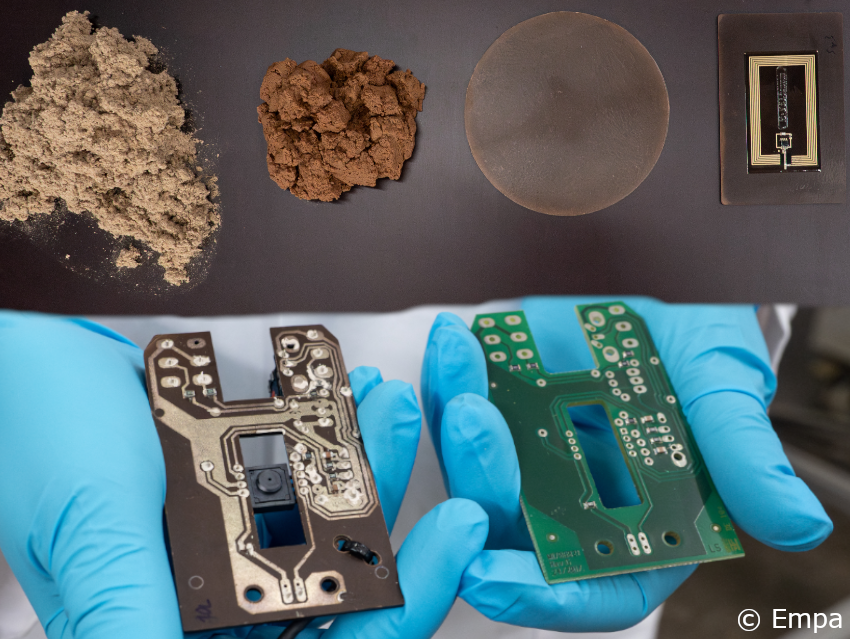Many electronic devices become obsolete within a few years, yet their printed circuit boards (PCBs) are made from petroleum-based materials that last for centuries and are difficult to recycle. PCBs—the “heart” of devices from laptops to electric toothbrushes—are typically green, rigid boards made of fiber-reinforced epoxy resin. Disposal requires costly processes, such as pyrolysis with air purification, creating a growing sustainability challenge.
Gustav Nyström, Thomas Geiger, and colleagues, Cellulose and Wood Materials Laboratory, Empa – Swiss Federal Laboratories for Material Science and Technology, Dübendorf, Switzerland, are developing a sustainable alternative. As part of the EU HyPELignum project, they deeloped a wood-based PCB substrate that is fully biodegradable and can compete with conventional epoxy resin. Prototype boards have been used to produce functioning computer mice.
The material comes from a natural mixture of cellulose and a small amouint of lignin, a waste byproduct from a process developed by the TNO research institute in the Netherlands, which extracts lignin and hemicellulose from wood. The remaining lignocellulose had previously seen no practical use.
To turn the flaky lignocellulose into high-tech boards, the researchers grind it with water to break down the relatively thick cellulose fibers into thinner fibrils, then press and dry the mixture in a process called hornification. The fibrils move closer together and dry to form a solid mass. The containing lignin serves as a natural binder. The resulting boards are nearly as durable as conventional PCBs, though still sensitive to water and humidity—a necessary feature to allow biodegradation by microorganisms.
In collaboration with PROFACTOR GmbH, Austria, the team printed conductive tracks on their sustainable boards and added components to create working devices, including computer mice and RFID cards. At the end of their lifecycle, the devices could be composted; the metals and components can be removed from the compost and recycled.
The researchers aim to enhance the boards’ durability without compromising biodegradability and plan additional demonstration devices by 2026. Industry transfer is also a priority, with Swiss and European partners exploring broader applications for lignocellulose-based electronics.
HyPELignum, funded under the Horizon Europe program and Switzerland’s State Secretariat for Education, Research, and Innovation (SERI), seeks a holistic approach to functional, CO₂-neutral electronics. The project runs from October 2022 to September 2026.
- Printed circuit board substrates derived from lignocellulose nanofibrils for sustainable electronics applications
Yuliia Dudnyk, Pavel Kulha, Václav Procházka, Gustav Nyström, Thomas Geiger
Scientific Reports 2025
https://doi.org/10.1038/s41598-025-91653-1




